Terrorist attack on Nanga Parbat
“Killer Mountain” is written on the sign on Karakoram Highway, where you can take a look at the majestic 8000er Nanga Parbat. Actually the sign recalls the numerous tragedies on the “Naked Mountain” in the last century, for example in 1937, when 16 members of a German expedition died in an avalanche. But now the sign has received a new, oppressive meaning. A hit squad penetrated to the base camp on the Diamir side of Nanga Parbat and shot at least ten people. The Pakistani government said the victims were five climbers from Ukraine, four Chinese and a Pakistani guide.
![]() read more
read more
Barrier-free Everest
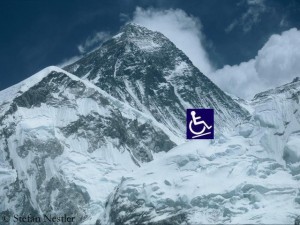 A permit for a video interview broadcasted live from the summit of Mount Everest via smartphone costs about $ 2000. We know that since this spring, when the Briton Daniel Hughes did it this way answering questions of the BBC– without permission, as it turned out later. The Nepalese Tourism Ministry was not amused. Hughes could be banned from obtaining climbing permits for ten years or banned from entering the country for five years. But I’m sure that meanwhile both parties have come to an amicable agreement on a special Everest smartphone tariff. How fortunate that I call my old friend Chomolungma from only 50 metres above sea level. Quite legally, only the NSA is listening too. It takes me three attempts to be successful:
A permit for a video interview broadcasted live from the summit of Mount Everest via smartphone costs about $ 2000. We know that since this spring, when the Briton Daniel Hughes did it this way answering questions of the BBC– without permission, as it turned out later. The Nepalese Tourism Ministry was not amused. Hughes could be banned from obtaining climbing permits for ten years or banned from entering the country for five years. But I’m sure that meanwhile both parties have come to an amicable agreement on a special Everest smartphone tariff. How fortunate that I call my old friend Chomolungma from only 50 metres above sea level. Quite legally, only the NSA is listening too. It takes me three attempts to be successful:
Namasté, Chomo! Stefan is calling! Where the hell have you been?
Also Namasté! I was taking a snow shower. Wonderful, this monsoon!
Did you really need a shower after this spring season?
Joker, are you living behind the moon?
![]() read more
read more
Bonington: The pioneers have gone elsewhere
When Everest was climbed first in 1953 Chris Bonington was a young English mountaineer of 17 years. Later he did historic climbs like the first ascents of Annapurna II in 1960, of the Central Pillar of Freney on the south side of Mont Blanc in 1961 and of the 7285-meter-high Ogre in the Karakoram together with Doug Scott in 1977 (the second ascent followed only in 2001). But Bonington also proved to be a great expedition leader. In 1970 he led the successful expedition to the South Face of Annapurna, in 1975 the expedition to Mount Everest, during which Doug Scott and Dougal Haston climbed the Southwest Face first. Bonington himself reached the summit of Everest in 1985 as a member of a Norwegian expedition. He was knighted by the Queen in 1996 for his services to the sport. I met the 78-year-old climber last week at the diamond jubilee celebration of the first ascent of Mount Everest in the Royal Geographical Society in London and asked him – of course – about his thoughts on Everest.
Sir Chris Bonington, 60 years after the first ascent of Mount Everest, how do you feel about these pioneers?
I’m a great believer in the heritage of our sport, looking back, enjoying and learning from what our predecessors have done. In a way that first ascent of the highest point on earth is one of the very, very great occasions. I think it’s story. How they succeeded and worked together, it was a superb team effort. It’s something very special.
![]() read more
read more
Friendship over generations
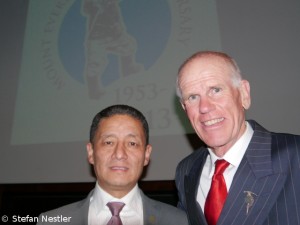
Jamling Tenzing Norgay (l.) and Peter Hillary
Like their famous fathers Tenzing Norgay and Edmund Hillary, Jamling and Peter are friends and would also be a good rope team. Both followed in the footsteps of their fathers: Jamling Tenzing Norgay (in 1996) and Peter Hillary (in 1990 and 2002) also reached the summit of Mount Everest. Both are continuing the work of their fathers for the benefit of the Sherpas and keep the memory of the two Everest pioneers alive. „My father climbed the mountain and came back down the mountain as a simple man. He lived the rest of his life very humble and simple just like Edmund Hillary”, Jamling said when we met during the Everest Diamond Jubilee Celebrations at the Royal Geographical Society in London. „No two people could have climbed Everest first than Hillary and my father.” Peter Hillary is also proud of the performance of his father and Tenzing Norgay: „For us 60 years later the key thing is what it stands for: Someone does something new. They actually open the door to everyone who follows. These things are very liberating and as a consequence very important.”
![]() read more
read more
German climber dies on Shishapangma
The sad news from the Himalayas don’t stop. On the 8000er Shishapangma in Tibet a German climber died of a high altitude cerebral edema. The expedition agency Amical alpin informed that the climber from the Bavarian region Chiemgau had belonged to a group of six members who, together with expedition leader Thomas Laemmle and their Climbing Sherpa Pasang, had reached the 8013-meter-high central summit of Shishapangma on 10th May. While descending the climber at first had shown symptoms of a high altitude pulmonary edema.
![]() read more
read more
Alexei Bolotov dies on Everest
What should have been a highlight in the history of climbing on Everest, ended in tragedy. Russian climber Alexei Bolotov fell to death in the Khumbu Icefall. Together with his compatriot Denis Urubko the 50-year-old mountaineer wanted to open a new route via the steep Southwest Face. As Denis said on phone, the rope broke on a sharp edge of rock when Alexei was abseiling. Bolotov fell down about 300 metres and died instantly. He was found at 5600 metres.
![]() read more
read more
Kammerlander: Sherpa attack ‚below the belt’
The phone rings. At the other end: „Hans Kammerlander!” I had asked the South Tyrolean extreme mountaineer by email for his thoughts on the 60-year-anniversary of the first ascent of Everest. Hans prefered to answer directly. The 56-year-old has climbed twelve of the fourteen 8000ers, all without bottled oxygen, seven of them together with Reinhold Messner. With him Kammerlander succeeded in 1984 the first (and till this day not repeated) double traverse on 8000ers, in Alpine style, i.e. without the help of Sherpas, without high camps, fixed ropes and oxygen mask. In the Karakoram in Pakistan Messner and Kammerlander summited Gasherbrum I, descended on another route to a col, from where they directly climbed up to the top of Gasherbrum II and downhill via another route. After eight days, they returned to basecamp. It was a milestone of climbing on the 8000ers.
In the morning hours of 24th May 1996 Hans reached the summit of Mount Everest, after climbing up from the Tibetan north side of the mountain. He was alone then. Afterwards he skied down, only in a few passages without snow he had to put off his skies. We talked not only about this day but also about the recent events at the highest mountain on earth.
Hans, what kind of mountain is Everest for you today?
It has always been important for me as a high altitude climber. For years I’ve dreamed of him because I have had two hobbies since I was a child: climbing and skiing. I had the idea to combine both on the highest mountain in the world.
![]() read more
read more
Messner: Traffic light at the Hillary Step
Ask the first man or woman you meet on any street in Europe after the name of a famous mountaineer and you will very likely get the response: „Reinhold Messner“. Although he did his pioneering ascents in the Himalayas andKarakorum more than a quarter of a century ago, the 68-year-old South Tyrolean is still very present in public awareness. Messner has been contributing his part by writing book after book, givings lectures and interviews – and polarizing with his statements. In my interview with him on the occasion of the upcoming 60th anniversary of the first ascent of Everest Reinhold Messner again had clear positions. Don’t wonder why I didn’t ask him about the recent incident on Everest. We met before.
Reinhold Messner, we first look back on the 29th May 1953, when the New Zealander Edmund Hillary and Sherpa Tenzing Norgay became the first men to reach the summit of Mount Everest. Would you say that this was an outstanding achievement of two courageous mountaineers or rather a team performance?
It was primarily a British team performance because the British have brought the know-how and the money and made huge preparatory works.
![]() read more
read more
Moro and Steck abandon Everest expedition
The top climbers Simone Moro from Italy and Ueli Steck from Switzerland and their British photographer Jon Griffith have abandoned their expedition on Mount Everest. They were responding to the fact that last Saturday they had been attacked and threatened with death by furios Sherpas in camp 2. „The history of mountaineering on Everest started with a partnership between a Sherpa and a foreigner. 60 years later this partnership has changed considerably“, Simone Moro said. He wants to stay at Everest basecamp to do some rescue flights with his helicopter. Ueli Steck headed back home. „My trust is gone. I can’t return to this mountain, even if all say that something like this would not happen again”, Ueli said in basecamp to the German journalist and climber Billi Bierling. „Who guarantees me that the furious mob will not cut my rope or burn down my tent?”
![]() read more
read more
Moro and Steck attacked on Everest
Actually, you think anything possible has already happened on Mount Everest. But it’s a sad novelty that in a high camp three climbers are beaten, kicked, pelted with stones and threatened with death by furious sherpas. The two top climbers Simone Moro from Italy and Ueli Steck from Switzerland and their British photographer Jonathan Griffith have been effected by the incident. „Something from another world“, Simone called what happened to them.
![]() read more
read more
Venables’ unrealizable wish for Everest
This May Stephen Venables can celebrate a double Everest jubilee: the 60th birthday of the first ascent – and his more personal anniversary: On 12th May 25 years ago Venables was the first Briton to climb Everest without supplementary oxygen. A milestone. „I was lucky enough in 1988 to help write a new chapter in the mountain’s history, when I climbed a new route up the Kangshung Face with Robert Anderson, Paul Teare and Ed Webster”, Stephen wrote to me after I had asked him for his thoughts on Everest on occasion of the 60th anniversary of the first ascent. “Thanks to those fine American/Canadian climbers and a magnificent base camp support team, I enjoyed some of the greatest days of my life of Everest, living for over two months in the beautiful Kama valley.” But his life was hanging by a thread then.
![]() read more
read more
Ang Tshering Sherpa: Endangered Everest
Ang Tshering’s biography can be assumed to be symbolic of the success story of the Sherpas in the past six decades. He was born in 1953, half a year after the first ascent of Mount Everest. In his home village Khumjung, on 3780 metres near the highest mountain of the world, Ang Tshering attended the school that was founded by Sir Edmund Hillary. The English skills which he had aquired there enabled him to work as a porter and interpreter for expeditions. In 1982 Ang Tshering founded „Asian Trekking”, today one of the leading agencies for expeditions and trekkings in Nepal. He married a Belgian woman, his son Dawa Steven studied in Scotland. Ang Tshering was and is not only a successful businessman with best worldwide contacts but has always been engaging for mountaineers. Since 1990 he is a member of the executive board of the Nepal Mountaineering Association, for nine years he was the president of the organization. In addition the 59-year-old Nepalese is the Immediate Past President of the Union of Asian Alpine Associations (UAAA) and Honorary Member of the International Mountaineering and Climbing Federation (UIAA). „Everest has put Nepal on the map as an ultimate (adventure) tourism destination”, Ang Tshering wrote to me after I had asked him for his thoughts about Everest on occasion of the 60-year-jubilee of the first ascent.
![]() read more
read more
Helga’s Everest nightmare
In fact she was the second but in a way the first too. Helga Hengge summited Mount Everest on 27th May 1999. As second German woman after Hannelore Schmatz. But Hengge also survived the descent – in contrast to Schmatz who died from exhaustion on 8300 meters on the south side of the mountain on 2nd October 1979. For years climbers passed the corpse called „The German woman” which was sitting in the snow. Later the storm blew it into the depth. Almost twenty years after Schmatz Helga Hengge reached the highest point on 8850 metres after she had climbed up from the Tibetan north side. „I felt like a goddess”, Helga later said, „as if I could float.” Hengge was 32 years old when she stood on top of the world. Today Mount Everest sometimes gives her a nightmare, Helga, aged 46 now, wrote to me after I had asked her for her thoughts on occasion of the 60th anniversary of the first ascent.
![]() read more
read more
Apa Sherpa: Everest is our greatest treasure
Will Apa Sherpa feel melancholy these days? Climbers from all over the world are arriving at Everest basecamp on the south side of the mountain. Meanwhile the so called „Ice Doctors” have prepared the route through the dangerous Khumbu icefall up to Camp 2 on 6600 metres. The climbing season on the highest mountain of the world is ready to start. For more than two decades Everest was an integral part of Apa’s life. Nobody has reached the top of the world as often as this 1.63 metre tall man: He reached the summit 21 times and became a living legend. In 2011 Apa finished his Everest career. Now he is about 53 years old. He doesn’t know for sure because in the 1960s no birth certificates were issued for Sherpas in his home village Thame in the Everest region.
![]() read more
read more
Brice: Everest is the ‚hidden giant’ of Nepal
Just now Russell Brice has a lot on his plate. The 60-year-old climber from New Zealand, owner of Himalayan Experience, is leading his 18th commercial expedition to Mount Everest. The most prominent of his ten clients who want to climb the highest mountain of the world is Evelyne Binsack. In 2001 she was the first woman of Switzerland who scaled Everest coming from the Tibetan north side of the mountain. This time Evelyne, aged 45, will try it from the south, for a documentary she also wants to carry her camera to the summit. Russell will stay at the bottom as basecamp manager, also looking after six climbers for Lhotse and four women who want to scale the 7861-metre high Nuptse. German journalist and mountaineer Billi Bierling is a member of this last mentioned team. Although Russell is „quite busy”, as he wrote me, he has taken time to send me his thoughts on occasion of the 60-year-jubilee of the first ascent of Mount Everest.
![]() read more
read more



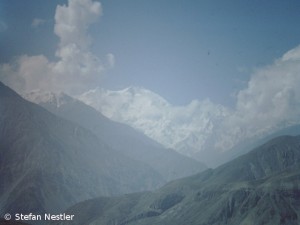

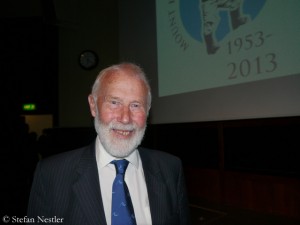
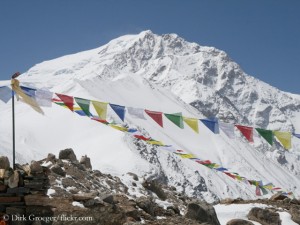
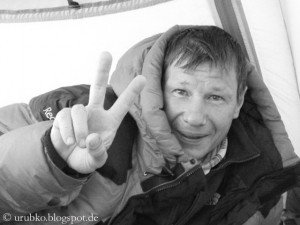
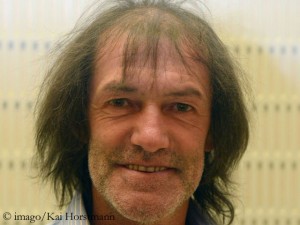
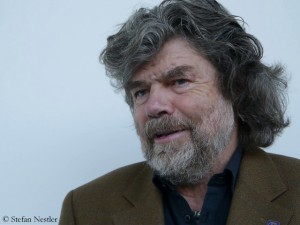
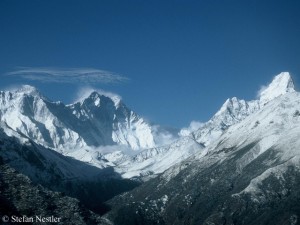

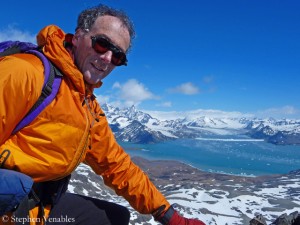
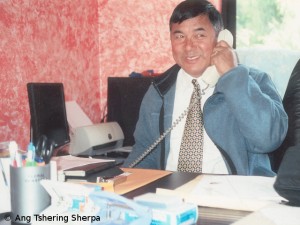


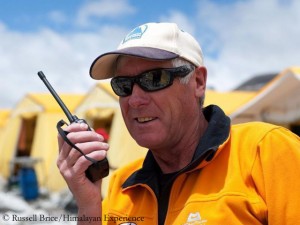





Feedback